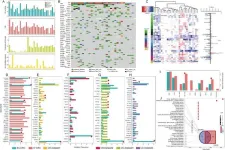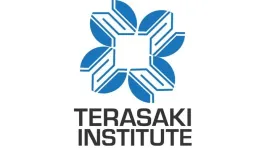(Press-News.org) We have all felt the workings of the so called “brain-gut-axis”, how our intestines get affected, for example, by stress. But still, researchers don’t know a lot about the relation between our gut and our brain.
Research has identified genetic correlations between patients suffering from irritable bowel syndrome (IBS) and psychiatric disorders, such as bipolar disorder.
By using new statistical methods, developed at NORMENT Centre, Post Doctor Markos Tesfaye at the University of Bergen and University of Oslo and his colleagues working under the leadership of Professor Ole Andreassen, have revealed thousands of shared genetic variants between different psychiatric patients and IBS-patients.
This sheds new light on the brain-gut axis and is a new step towards finding effective treatment for IBS.
IBS shares group of genes with schizophrenia, bipolar disease, depression, and anxiety
IBS is a gastrointestinal disease affecting approximately 10 percent of the population worldwide. The symptoms range from abdominal pain, constipation and diarrhea and the disease often cause poor quality of life.
“It’s also considered being psychosomatic, as the doctors do not find evidence of pathology upon examination of the intestines”, Tesfaye explains.
By using data from over 50 000 patients with IBS and hundreds of thousands of controls, and new statistical methods, the researchers managed to identify 116 new genomic risk loci for IBS.
Genomic loci are specific locations within the DNA sequence often comprising a group of variants.
They furthermore identified 70 unique loci that are shared between IBS and different psychiatric disorders: Seven with generalized anxiety disorder, 35 with major depression, 27 with bipolar disease and 15 with schizophrenia.
More knowledge about how the gut and the brain is intertwined.
Interestingly, they discovered that many of the loci related to IBS also are involved in regulating the nervous system.
“This expands our understanding of the genetics of IBS and where IBS lies in relation to gastroenterological and psychiatric diseases”, says Tesfaye.
He hopes that their findings can initiate experimental research, which in turn could make it possible to develop treatments for IBS.
If, and how, problems of the intestine could cause the development of psychiatric diseases, lies beyond the scope of this article. However:
“Some researchers have reported that inflammation in the intestine may lead to disruption of the intestinal barrier and leakage of bacterial products into the circulation, which in turn may reduce the permeability of the blood brain barrier and thus the brain may be affected ”, Tesfaye points out, and adds that this can become a subject for future studies.
END
New genetic relations between irritable bowel syndrome and psychiatric diseases discovered
2023-08-15
ELSE PRESS RELEASES FROM THIS DATE:
First-of-its-kind study reveals predictive factors for outcomes of advanced stage AL amyloidosis
2023-08-15
(WASHINGTON, August 15, 2023) – Early improvements in cardiac and hematologic parameters may predict better survival outcomes for patients being treated for stage IIIb AL amyloidosis, a deadly disease with a median survival of 4-6 months caused by abnormal protein buildup, according to new research released today in Blood Advances.
Amyloidosis occurs when normal proteins in the body misfold and form amyloid deposits in vital organs and tissues, which can lead to organ dysfunction, failure, and death. The prognosis for patients with advanced cardiac amyloidosis is extremely poor, ...
Innovative research on schistosomiasis-associated colorectal cancer (SA-CRC) yields unique insights into genetic mutations and treatment implications
2023-08-15
In a study published in the journal Genes & Diseases, researchers from Naval Medical University and Soochow University conducted an in-depth investigation into the genomic landscape of schistosomiasis-associated colorectal cancer (SA-CRC). By utilizing whole exome sequencing on tumor tissues and their non-tumor counterparts obtained from thirty SA-CRC patients diagnosed at Changzheng Hospital from 2014 to 2020, the team successfully identified 2476 nonsynonymous mutations spanning across 1978 genes. This intricate analysis revealed a lower median tumor mutation burden (TMB) in SA-CRC compared to sporadic colorectal cancer (S-CRC), ...
15 students selected amongst hundreds to serve as national Youth Heart Ambassadors
2023-08-15
DALLAS, August 15, 2023 — Fifteen students from coast to coast are joining the American Heart Association, a global force for healthier lives for all, to champion their peers to live heart healthy. Representing a diversity of backgrounds and experiences, these youth selected as national volunteer Youth Heart Ambassadors for the association’s in-school programs, Kids Heart Challenge™ and American Heart Challenge™ will share how heart disease and stroke have impacted their lives while encouraging others to ...
Terasaki Institute for Biomedical Innovation awarded $2.2 million NIH grant to develop advanced treatment for diabetic foot ulcers
2023-08-15
(LOS ANGELES) – August 15, 2023 - A team of researchers from the Terasaki Institute for Biomedical Innovation (TIBI) and the University of Nebraska Medical Center (UNMC) has been awarded a multimillion-dollar grant from the National Institutes of Health to develop a superior, multi-pronged wound treatment for diabetic foot ulcers (DFUs).
DFUs remain a significant complication resulting from dysregulated internal pathophysiological conditions in diabetic patients. The unresolved diabetic wounds affect patients’ quality of life and can result in amputations ...
Novel study shows greater metabolic response to animal versus plant proteins in young and older adults
2023-08-15
Protein from two ounce-equivalents (oz-eq) of animal-based protein foods provides greater essential amino acids (EAA) bioavailability than an equal two oz-eq of plant-based protein foods, according to scientists at Purdue University.1
The protein quality of a food or meal (i.e., the EAA content of a meal) is a major factor in determining how the body can use amino acids for muscle and whole-body protein building.2-4
The Dietary Guidelines for Americans (DGAs) puts an emphasis on consuming a variety of protein foods based on ounce-equivalent portions with similar nutritional ...
Gold buckyballs, oft-used nanoparticle ‘seeds’ are one and the same
2023-08-15
HOUSTON – (Aug. 15, 2023) – Rice University chemists have discovered that tiny gold “seed” particles, a key ingredient in one of the most common nanoparticle recipes, are one and the same as gold buckyballs, 32-atom spherical molecules that are cousins of the carbon buckyballs discovered at Rice in 1985.
Carbon buckyballs are hollow 60-atom molecules that were co-discovered and named by the late Rice chemist Richard Smalley. He dubbed them “buckminsterfullerenes” because their atomic structure reminded him of architect Buckminster Fuller’s geodesic domes, and the “fullerene” family has grown to include dozens of hollow ...
Weaker transcription factors are better when they work together
2023-08-15
HOUSTON – (Aug. 15, 2023) – Bioengineers can tailor the genomes of cells to create “cellular therapies” that fight disease, but they have found it difficult to design specialized activating proteins called transcription factors that can throw the switch on bioengineered genes without occasionally turning on some of the cell’s naturally occurring genes.
In a study published online in Cell, bioengineers from Rice University, Boston University, Harvard Medical School, Dartmouth College and Harvard University’s Wyss Institute showed they could all but eliminate such “off-target” gene ...
Treating back-to-school ear infections without antibiotic resistance (video)
2023-08-15
SAN FRANCISCO, Aug. 15, 2023 — “Back-to-school” season means buying pens and paper, figuring out the new bus route, and … earaches. Doctors typically treat these infections with antibiotics, but children don’t always complete the full course, accelerating resistance to these medications. Today, researchers report developing a single-use nanoscale system that’s unlikely to generate resistance. Using a compound similar to bleach in test animals, they show it can kill off one type of bacterium that causes ear infections, and it could someday be easily applied as a gel.
The researchers will present their results today at the fall meeting of the American Chemical ...
Discarded aloe peels could be a sustainable, natural insecticide (video)
2023-08-15
SAN FRANCISCO, Aug. 15, 2023 — Aloe barbadensis, commonly known as aloe vera, has been used for thousands of years to treat skin ailments, promote digestive health and heal wounds. But while aloe vera gel is in high demand, the peels are thrown away as agricultural waste. Today, scientists report that these peels, or rinds, can ward off bugs, acting as a natural insecticide. They have identified several bioactive compounds in extracts from the peels that deter insects from feasting on crops.
The researchers will present their results at the fall meeting of the American Chemical Society (ACS). ACS Fall ...
Microgreens and mature veggies differ in nutrients, but both might limit weight gain
2023-08-15
SAN FRANCISCO, Aug. 15, 2023 — Young vegetables known as microgreens are reputed to be particularly good for health. Now, researchers are trying to find out if microgreens — which can easily be grown at home — are the superfood they’re claimed to be, and how they compare to mature veggies. Results to date show their nutritional profiles differ, as do their effects on gut bacteria. Yet, tests in mice suggest that both microgreen and mature vegetables can limit weight gain.
The researchers will present their results today at the fall meeting ...









